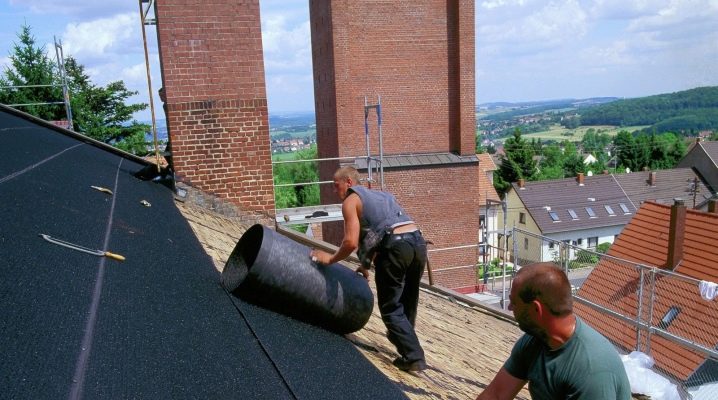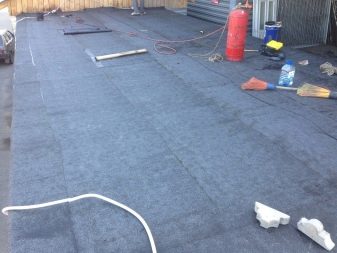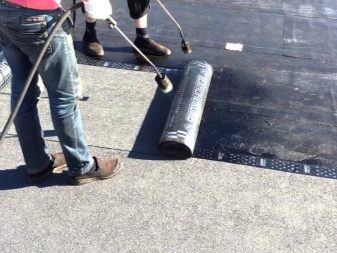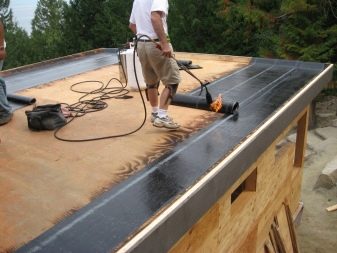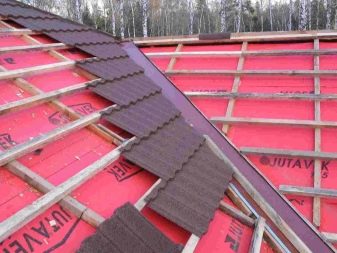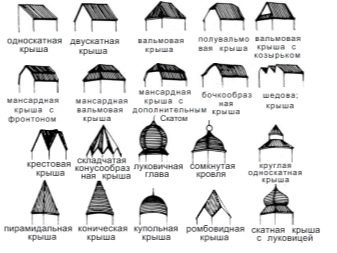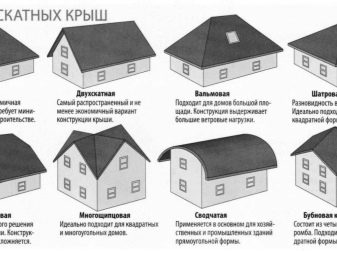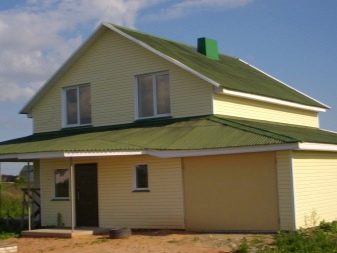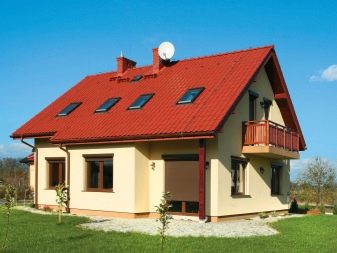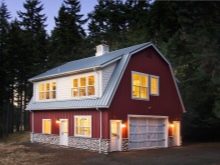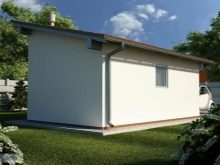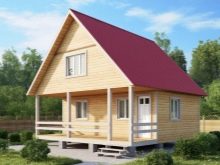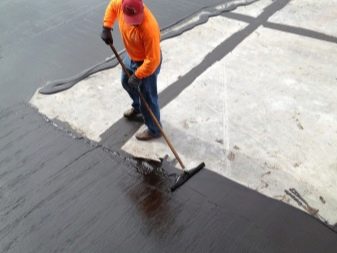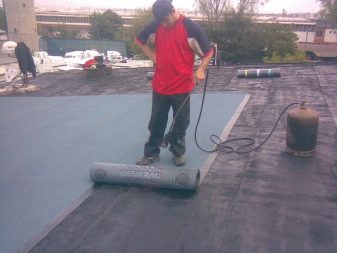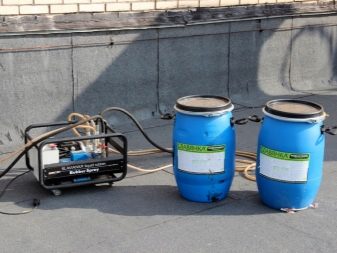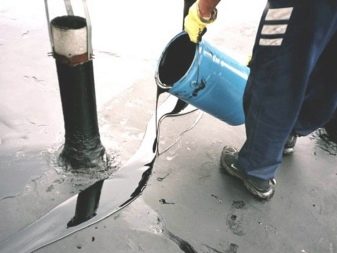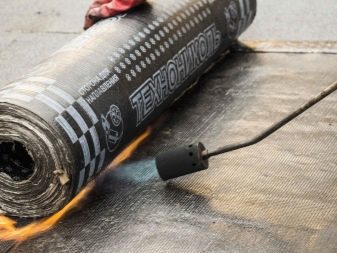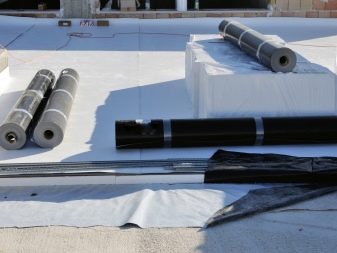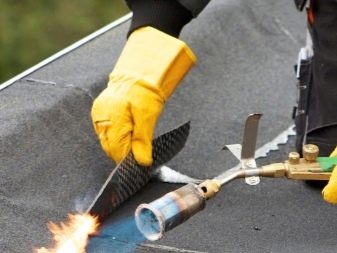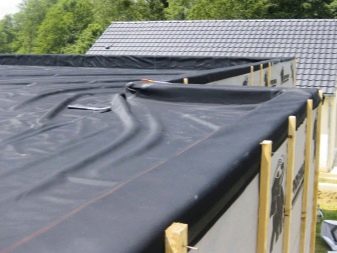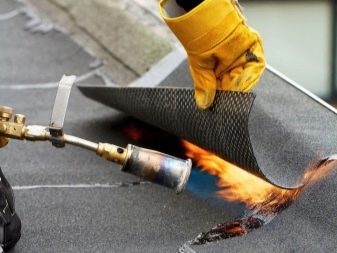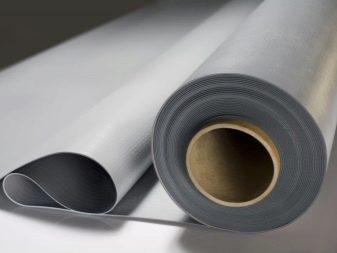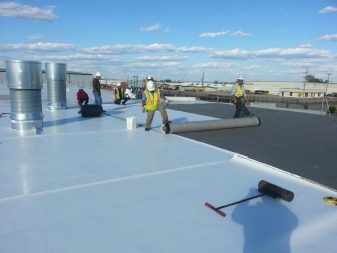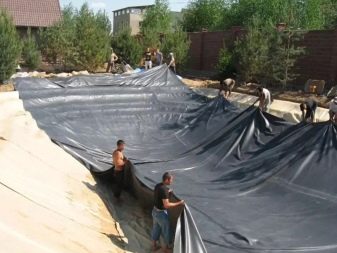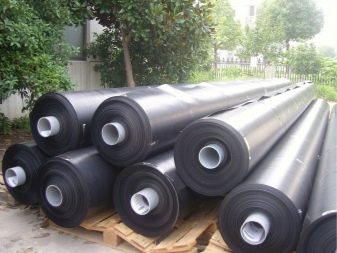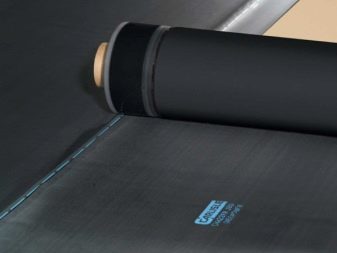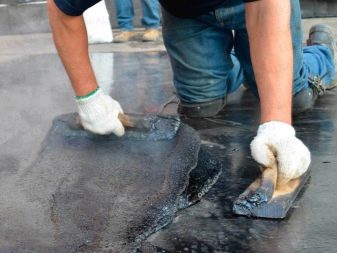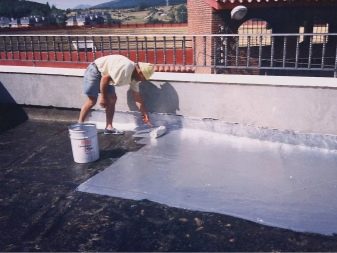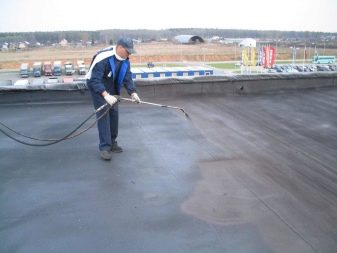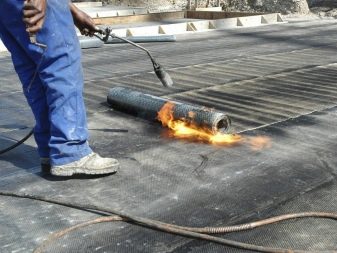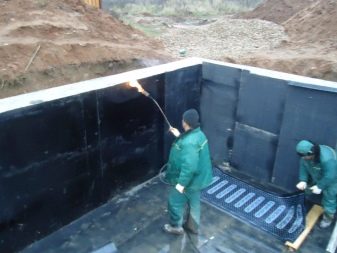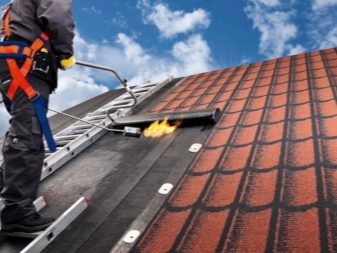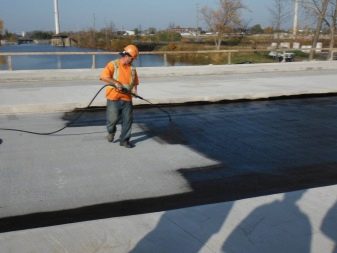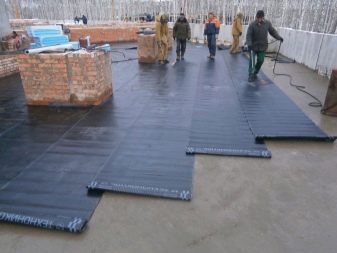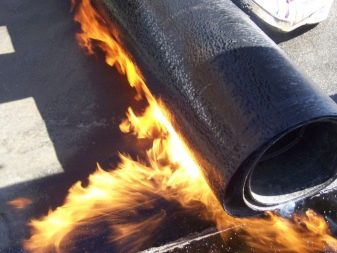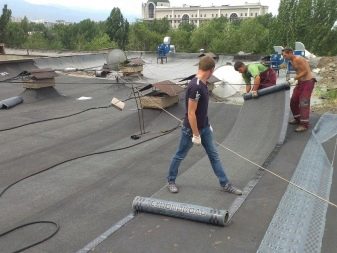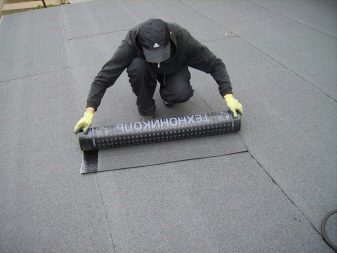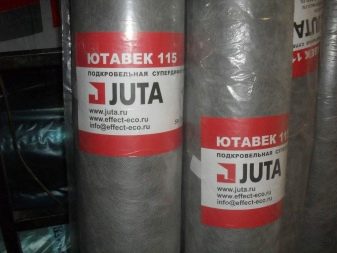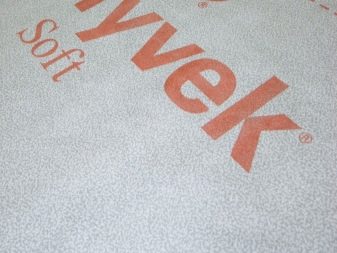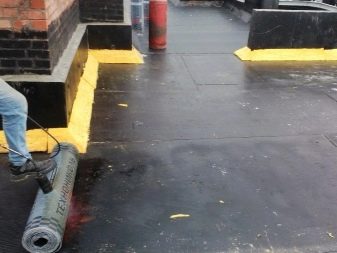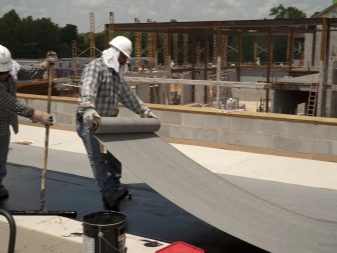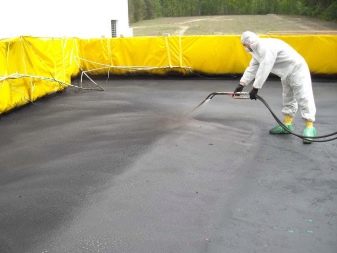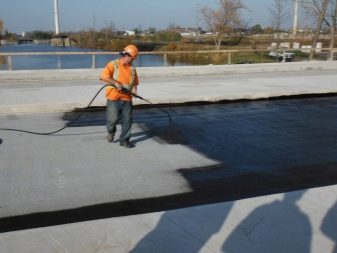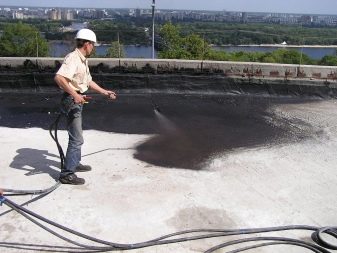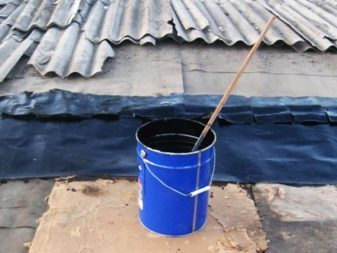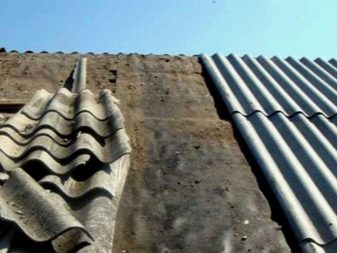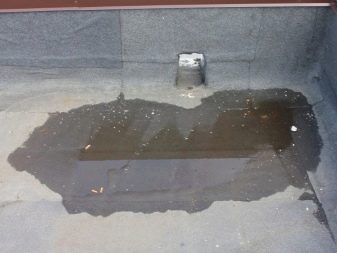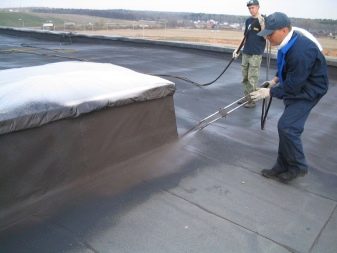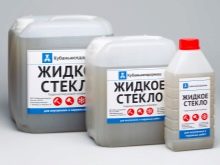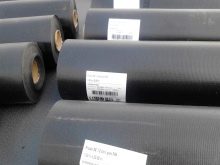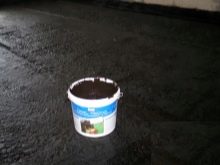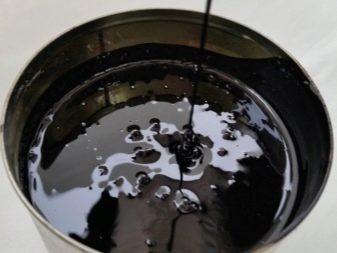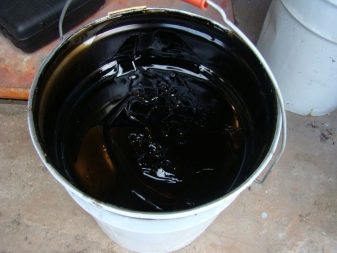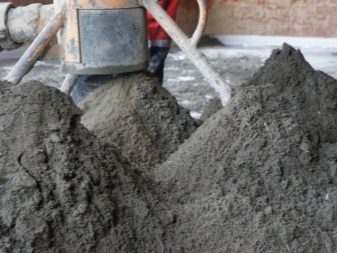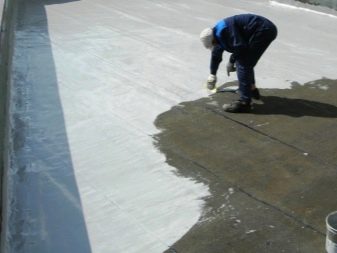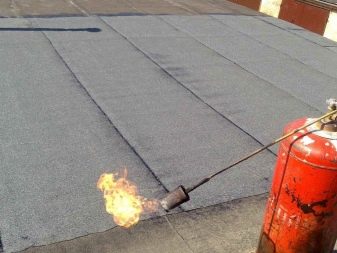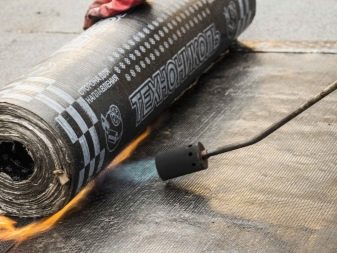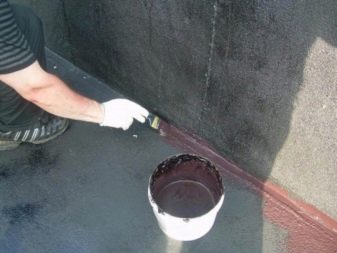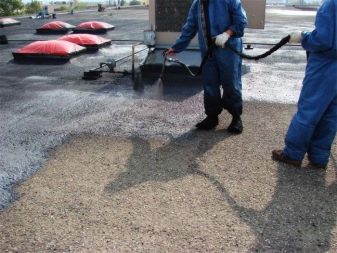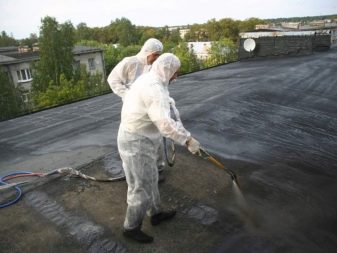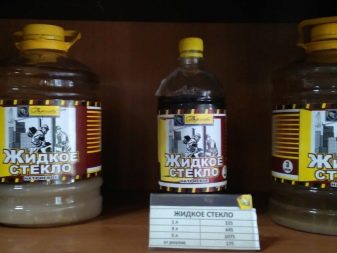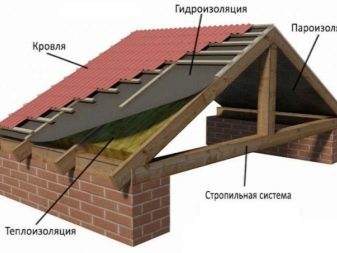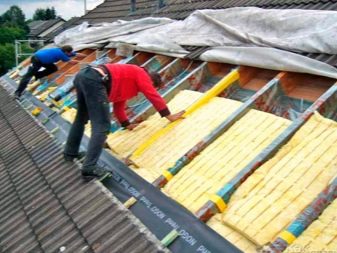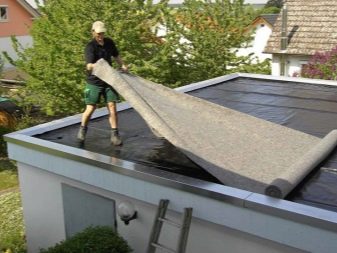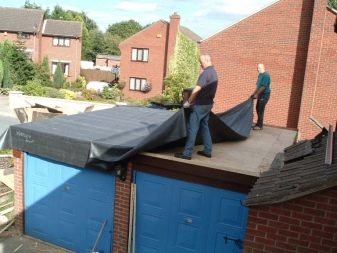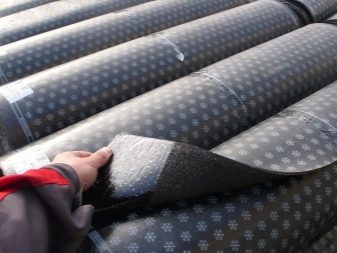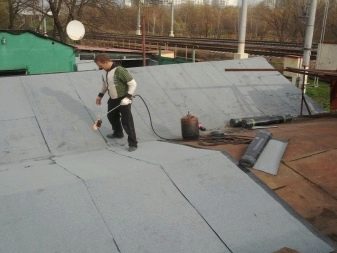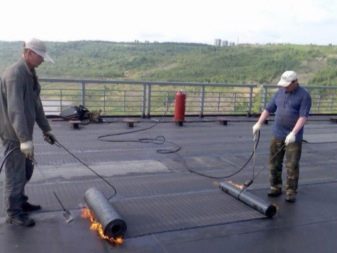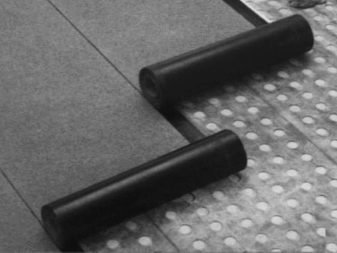Roof waterproofing: device, choice of materials and subtlety of installation
Roof waterproofing is one of the necessary elements of its arrangement. This is really an extremely important task, because you need to handle the roof so that it does not start to leak after the first more or less heavy rain. And it is unlikely that someone will want to do roofing work again in six months or a year in order to eliminate the leakage. That is why you should immediately treat the implementation of the waterproofing process responsibly and understand how it can be carried out qualitatively.
Special features
It should be said that the waterproofing of the roof is an important process that can be carried out using slightly different technologies.But before proceeding to the description of the process of waterproofing, it is necessary to start to talk about what kind of roof there are.
Roof waterproofing may vary depending on its type. For example, for a flat roof, it will be performed using one technology, and for a sloping roof, it will be done on another. And it will not only differ in the method of installation, but also in the materials used, as well as their quantity. In addition, the condition of the insulation as well as the operational characteristics of the entire roof will depend on how well the insulation will be made. But here you should not forget about what point - moisture can come not only from the outside, but also gather under the roof, which is no less detrimental to it and to the interior, especially if repairs have recently been made there.
Types of construction
Roof arrangement to be different.
They differ according to the following criteria:
- in shape and variation;
- by design features;
- depending on the angle of inclination.
If we are talking about the angle of inclination, then the roofs are:
- sloping - in this case, the angle of inclination will be equal to 2.5-3 degrees;
- pitched - the angle of inclination will be 10 percent of the level of the horizon. Used significantly more often than the first option.
If we talk about variations of the roof itself, then in this case the roofs can be single-pitch, double-gated, broken and hipped.
If we talk about the design features, the roof can be bescherdachnoy, as well as attic. The first type of roof is combined with the main room. Typically, such roofs are ventilated, non-ventilated, and also partially ventilated. If we talk about garret roofs, then such options are cold and unheated. A cold roof will be cold in itself and in general it does not make much sense to warm it. But non-insulated models can be turned into pretty good warm solutions, but it is necessary to carry out a number of works on weatherization.
In general, a lot will really depend on the type of roof in the issue of waterproofing, so knowing the features of the type of roof in your room will definitely be necessary.
Standards
To carry out high-quality waterproofing of the roof can only be when the materials used will meet the following standards.
- Their main property should be water immunity, as well as water resistance
- It will be good if such materials are also excellent in terms of thermal insulation - this will provide an opportunity to save on insulation.
- An important feature of waterproofing materials will be their high elasticity, since rigid materials are difficult to apply during roofing, especially if we are talking about some complex figure options.
- When creating a waterproofing for certain categories of roofs, it is necessary to select materials that are distinguished by excellent vapor permeability. This parameter will be extremely important when there is a living room under the roof of the building - a room or, say, an attic.
- No less important aspect than the above, will be the strength of waterproofing materials. Everything that will be used for waterproofing should have the ability to keep physical exertion and be as immune as possible to physical damage. Some fragile or not very strong materials simply cannot be used, since even the slightest violation of the structure of a material can cause water to get inside and destroy the material, and cold will start to get inside the building.
- Some people, hoping to save money, simply roof the roof with good material.They mistakenly believe that its strength will be enough to protect the building from almost all negative natural factors. They are right that such material can protect the building from low temperatures, scorching sun or wind. Here only water will easily penetrate into the holes and crevices, destroying this coating inside and provoking corrosion with fungus. It is precisely because of the struggle with the phenomenon mentioned above that it should be understood that it is impossible to do without waterproofing the roof.
- And in order for the material to be suitable, you should be aware of standards such as vapor tightness, especially if we are talking about a warmed roof. This property gives water the opportunity to leave the insulation layer under the roof, from where it will simply erode. If the vapor permeability of the material is low, then water will collect in the material, transforming into condensate, and will simply destroy it, due to which the insulation will eventually lose all of its useful properties and characteristics. If we talk specifically about materials with high vapor impermeability, then they can be called a superdiffusion membrane, which is usually placed directly on the insulating layer, which makes it possible not to make any intermediate frame.If the roof is non-insulated, then it can be waterproofed with a material having low vapor-permeable characteristics.
- Another important point - water resistance, which is also mentioned above. It is expressed in order to withstand contact with water as long as possible. When finishing a flat roof is carried out, it is necessary that the water-repellent surface is high, because water tends to stay on the roof of this type. If the roof is pitched, then this indicator will be no less important due to the fact that often the roofing material has so-called sags or depressions, due to which the water may linger there. If you take the standard, the waterproofing layer must withstand a pressure of one and a half meters of water column. As a temporary roof, you can use a membrane with an indicator of four meters of water column.
- If you decide to use a waterproofing film as a temporary roof, then it should also have excellent characteristics in the matter of withstanding the effects of sun radiation.
- And the last important parameter will be mechanical strength.Just in the process of laying materials on the roof, some elements can break the film integrity. Where deformations and ruptures occurred, leaks may occur. The integrity parameter is measured in units of weight per square meter. The film will be reliable, where the indicator reaches a value of 100 grams per 1 square meter.
In conclusion, I would like to say that all materials used must comply with GOST standards. This can be seen if you look at the markings on the packaging of various materials. In this matter, one should not save money and if there is no indication on some cheap waterproofing material that it fully complies with GOST, then it is better not to buy it. Believe me, it is better not to save, otherwise you will have to spend significantly more then when the roof of your house begins to leak.
What can be isolated?
Today, waterproofing roofing materials are represented on the market by a fairly large range of solutions, each of which has its own advantages. One of the most popular for quite a long time are polymeric membranes.A film of this type is durable and can last for about a quarter of a century. Waterproofing materials of this type are environmentally friendly, durable and perfectly resistant to fire.
In more detail, there are several categories of the mentioned material.
- Super diffusion membranes, mounted directly on the insulation. Membranes in this category are made from nonwovens. Usually they are used when finishing the roof of the attic.
- PVC membranes are in the form of waterproof films consisting of three layers. Two external made of polyvinyl chloride, and between them is reinforced polyester.
- Anti-condensate version is made of non-woven material, which easily absorbs water. This film prevents condensation. Typically, this option is used when finishing the roofs of metal.
- Perforated type membranes are materials in which there are pinholes. Such waterproofing, as a rule, can be used on any type of roof, but it should not be put on the insulation. In order to avoid problems, leave a little space to get air.
- EPDM membranes - a material that is made from thermoplastic rubber. Such waterproofing is universal, because it can be used on almost any roof. As a rule, the term of its use ranges from 25 to 50 years. These membranes have high strength and good elasticity, do an excellent job of exposure to natural factors, and even direct solar exposure. Also, such membranes are well stretched, which allows them to be laid on the roof of almost any type. To maximize their waterproofing, it is enough to cover them with an acrylic-based compound.
But most often all these types of membranes are also called roll materials. They are considered one of the best solutions on the market today.
Another option that can be found on the market today is a coating waterproofing. By name you can understand what it is applied by smearing on the surface. The most popular product of this category is bitumen-based mastic. It has a considerable service life - about 20 years. However, over time, the material loses its plasticity and reacts poorly to physical impact.But this usually happens with mastic of low quality.
If we talk about the benefits of such materials, it should be noted:
- Excellent adhesion and high-quality adhesion to any surface - concrete, metal, brick. It is possible to apply a similar waterproofing practically on any roof.
- A material of this type makes it possible to create a truly holistic coating without any seams. This provides excellent sealing properties and makes this material a good solution, as it produces excellent vapor and waterproofing.
- It is quite easy to work with them, since no additional frame is required and any roof can be processed with material.
Another option - painting waterproofing. It is represented by various kinds of emulsions, paints and varnishes. As a rule, they are made either on the basis of bitumen or on the basis of polymers. Often these fluids are used rather than as a protective solution, but as an opportunity to extend the life of the roof, for which reason they are applied directly to its surface.
The next common type is hydrophobic pasting materials. The essence of this option lies in the fact that such a windscreen will be an adhesive film. Such films are sold in rolls, which can be made of felt, fiberglass, polyester or glassine. The advantage of this material will be ease of application, and the price of the material is low. The advantages of such materials include the highest quality, long service life and good strength. Such materials have the ability to apply not only as a waterproofing, but also as a coating for the roof, for example, the same roofing material.
The latter is quite an interesting option can even be a decorative finish finishing type for the roof. We are talking about shingles based on bitumen. It can also perform, in addition to the function of vapor barrier and waterproofing, also the role of roofing material.
If we talk about its benefits, it should be called:
- attractive appearance;
- does not require special care, as it consists of stone-type crumb;
- has good strength characteristics;
- makes it possible to save money and not to make additional waterproofing of the roof;
- material can be used for a long time and it does not lose its appearance in the process of application;
- quick install
Of course, this is not a complete list of materials for waterproofing, which can be found on the market. But the above materials can be called the most common.
Manufacturers Overview
As already mentioned, waterproofing the roof - a very important process. And the quality of living in the house, but also the lifetime of the roof itself will depend on its quality. It is for these reasons that one should be extremely responsible in choosing the material. And one of the important criteria will be the choice of the manufacturer. You need to buy materials that are made by companies with a good reputation and reviews.
If we talk about roll materials, then the most popular euroroofing material can be called products company "Aquaizol". This Ukrainian company manufactures high-quality euro-ruberoid using fiberglass from leading European companies. At the same time, if we talk about polyester, the company produces it on its own, which makes it possible to keep the quality high and the cost low. If we talk about the usual ruberoid, it would be best to use the products of the Samara plant.
If we talk about manufacturers of bitumen insulation, then the situation is as follows. The most popular mastics on the market are such brands like Pazkar, Inopaz, Elastopaz, and Master Ruff. Quite high-quality mastic based on polyurethane is considered mastic firms "Inopaz H2O". Its price is 200-250 rubles per kilogram.
Speaking about diffusion membranes and waterproofing films, it is necessary to name the most interesting solutions. products "Takofol", "Yutafol", as well as "TechnoNIKOL". They have low cost, and also quite quite good waterproofing properties. In addition, the waterproofing of the Russian of the company "Izospan».
If we talk about pseudodiffusion membranes, then the best buyers say about the products of companies such as Elvitek, Yutafol-D and Svitapfol-D.
If there is a need to purchase more expensive or, as they are called, "breathing" membranes, then you should pay attention to the products of such companies as Russian TechnoNICOL, German Divoroll, as well as Tyvek from Luxembourg. In general, as you can see,There are a large number of both domestic and foreign manufacturers on the market, and to find really high-quality waterproofing of one kind or another is not something difficult.
Which technology is better?
When asked what technology will be better, one cannot give a definite answer. There are many reasons for this, but the two main ones are that the type of roof in each case will be individual, as will the individual construction of the house in terms of using the attic space for specific needs. If to speak in general, it would not be superfluous to warm the roof with polystyrene foam, which in itself is a good protective material that is resistant to moisture penetration. If you perfectly handle the joints between polystyrene panels, then the protection from moisture will become even better. In addition, it would not be superfluous to use a waterproofing film, which is represented by ordinary polyethylene, which has a slightly higher density. Also, if desired, you can use other similar materials of higher quality and with a higher price.
If we talk about waterproofing the most common type of roofs - flat, then it should be said that the best solution in this case would be the use of membrane waterproofing in combination with insulation.This design is called inversion roof. So called cases when using several types of waterproofing together with other materials.
Pretty good option waterproofing - bulk. By name you can understand that mastics are actively used here. And the mastic can be used not only on the new roof, but also to restore the old one. A quite good solution would be liquid rubber, which will also be an excellent waterproofing. If the budget is small, then you can use roll materials like roofing material. In addition, polyurea or a professional sheet will be good options in terms of waterproofing.
In general, as you can see, there are enough good technologies for waterproofing flat roofs.
If we talk about slate roofs, then it should be said that slate itself is an excellent waterproofing, which is absolutely not afraid of water. Previously, ruberoid could be laid under the slate, but now most of them use a hydro-barrier or a waterproofing perforated film. The same waterproofing technology is used for metal roofing.It can also be applied from the inside, which ensures the versatility of the material. Another advantage of slate is that its installation is extremely simple, which allows installation even for a person who does not have any special skills in this matter.
Self styling
Now we come to the important question - how to carry out the installation of waterproofing with your own hands. Properly laid waterproofing itself is not as easy as it may seem at first glance. The thing is that if you at least a little retreat from the technology of laying waterproofing, you can significantly reduce its effectiveness and achieve not very good results. As a result, time, money, energy will be spent, and the house, as it was cold on the roof, will remain so. Let's try to tell the features of the technology on the example of finishing a flat roof - the most common type of roof. This instruction may to some extent be called universal.
If we talk about waterproofing a flat roof, then it is most often done on a concrete foundation. In this case, the selection of material should be approached as carefully as possible, because it is on such roofs that leaks most often appear.The problem is that the flat construction of the roof makes it impossible to make a slope in order to divert water. And any, even the most insignificant puddle, will surely find the possibility of how to leak through a poorly made waterproofing layer.
In this particular case, the following elements will be needed:
- polymer membranes;
- composition for coloring;
- bituminous mastic or liquid rubber;
- bitumen membranes in the form of rolls;
- liquid glass.
Before starting the implementation of the whole process, it is necessary to prepare a working basis. All the gaps and joints that are between the slabs of concrete, it is necessary to cover with mortar, after adding to it a little liquid glass. For 1 kilogram of solution should be 30 grams of liquid glass. After the joints are missed, it is necessary to leave them for a while in order for the cement mixture to dry. Now you can start laying the first waterproofing layer, which will act roofing material. They represent a cardboard with a high density, which is saturated with bitumen. One side of it is covered with small pieces of quartz. Installation of waterproofing do overlap, and the individual sheets must overlap the joints by ten centimeters.
The next stage is laying on top of a ruberoid 2-3 cm.made of mortar sand and cement. If it is executed correctly, it will be homogeneous, there will be no cracks in it and it will be able to completely protect the roof from moisture and damp. In order to prevent cracking of the screed during drying, it is necessary to cover it with a reinforcing mesh of 5 to 5. After that, the raw screed is covered with polyethylene and moistened every three days for 14-21 days. When the screed has dried, it should be well primed. You can buy a ready-made primer, or you can make it yourself by adding a little gasoline to construction bitumen.
Now you can put the last waterproofing layer on the dried primer. In this case, it is better to use rolled coating options. They can be fixed either by using a blowtorch or by heating with a gas torch. First, the screed heats up in the place where the material will be directly laid, after which one side of the roll is heated, placed on the treated area and pressed tightly so that all the air comes out from under the waterproofing layer. After that, the remaining lanes are laid in the same way.
If we talk about the places where walls or parapets rise above the roof, for example, the wall, pipes coming out of the roof to the outside, then you should roll the waterproofing rolls onto a vertical surface at a height of 20 centimeters, and then glue them at this level. And so that the moisture does not fall under the sheet of material, its end must be protected with galvanized casting. A gap that will be between him and the wall, you need to fill with bitumen or sealant, which has water-repellent properties.
In addition, painting material, which is already applied to the main waterproofing, can be an additional protection from moisture for the roof. It is enough to put a layer 5 millimeters thick.
It should be said that despite the fact that roll materials for waterproofing is an excellent solution, but through poorly made joints water can easily leak, which simply negates the work of this type. But if you need an alternative, then it can be liquid mastic. They make it possible to create a smooth on the roof surface, and, importantly, a seamless layer that will be an excellent protection from damp.
To apply such mastic, for the beginning it is necessary to prepare such auxiliary materials as the compressor and the roller. The waterproofing layer will be 3-4 millimeters. Before starting to process the roof, it is necessary to clean it completely, and also to degrease it, then to cover it with a layer of primer and allow it to dry completely. The primer will be better to choose the one recommended by the mastic manufacturer. Drying bituminous mastic for five to six hours. Often the material is applied in several layers. Each layer is best allowed to dry for 3-4 hours. It is best to read the instructions for use, where exactly the time will be indicated. If you do not comply with the technology, the mastic can simply stratify and its water-repellent properties will be lost.
If a cold compound is used for waterproofing, its density can be changed by adding a solvent. Instead, you can also use gasoline, but always with a low octane number. Often cold mastic diluted with gasoline in order to reduce its viscosity, as well as to simplify the process of applying in the cold season.At the same time, it should be said that the diluted mastic will dry out significantly longer than usual.
Also for waterproofing, you can use liquid glass. With him, everything is simple. To do this, simply take a spray gun or compressor to put it on the roof. This type of coating is good because it easily penetrates into all concrete gaps. But such coverage is short-lived and needs to be replaced in five years.
If you need to make a waterproofing for a gable roof, it is best to use rolled materials. If the slope of the roof is very large, then this is the only solution, as the plastering and painting options will not work due to the fact that they will simply flow down.
If we talk about the use of ruberoid, the procedure will be as follows:
- Roll out the roll and fix it, going upwards. We attach the edge of the sheet to the edge of the roof, after which the roll is rolled out until it reaches the ridge, where the material must be securely fixed.
- We put overlapped individual ruberoid sheets by 15-20 centimeters.
- We attach the material to the roof with the help of a construction stapler, and use racks along the rafters.
- If desired, lay a layer of slate.
- On the inner surface of the roof we install a vapor barrier made of glassine or polyethylene.
In general, as you can be sure, to make waterproofing of the roof with your own hands is a simple matter, but it requires full and strict observance of all the subtleties of the technological process.
Pro tips
For work, you should choose only proven materials to create a waterproofing. If you make a bad bargain or save too much on this issue, how long this waterproofing will last is a controversial issue. In any case, you then have to spend significantly more and re-do the procedure. Therefore, it is better not to save on materials from the very beginning.
Another tip - it is best to choose the warm season in order to build a waterproofing system for the roof. The fact is that if you use the same paints and varnishes, in this case they will dry out faster and the chance that they will not lose their properties will be much higher. But in the cold season and wet weather with the drying of such materials can be serious problems.
In addition, it will not be superfluous to begin to clearly once again clearly analyze what and how you will do. This is necessary in order for you to form a clear and understandable picture of how the waterproofing process will be carried out. As if the technology is broken, then you will most likely not be able to create a high-quality waterproofing layer and simply lose the money.
Waterproofing is needed for any type of roof. And if it concerns a residential building, then there is no point in even discussing its necessity. But you need to do such a procedure yourself only when you have understood the theory very well and as clearly as possible, which will help you to clearly and quickly put your idea into practice. Without good theoretical knowledge and the use of really high-quality waterproofing materials to make a good waterproofing of the roof is very, very problematic. But in general, if you are confident in your abilities and knowledge, then to create a reliable and most importantly, durable waterproofing for the roof with your own hands, you definitely will have no difficulty.
How to make a waterproofing of the roof with your own hands, see the video below.
